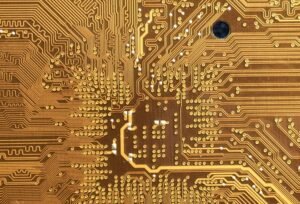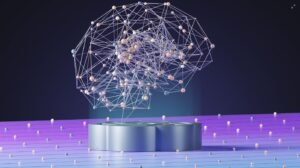AI Plagiarism: An Overview of the Growing Concern
Plagiarism has long been a major concern in academic and professional settings. With the advancement of technology, particularly Artificial Intelligence (AI), the methods and sophistication of plagiarism are evolving at an alarming rate. AI-powered plagiarism detection tools have emerged, raising questions about the ethics and effectiveness of combating this issue. In this article, we will explore the impact of AI on plagiarism, discuss key considerations, and suggest strategies to mitigate this growing concern.
Key Takeaways:
- AI-powered plagiarism detection tools are becoming more prevalent and sophisticated.
- The use of AI in plagiarism raises ethical concerns and challenges traditional approaches.
- Educational institutions and content creators must be proactive in addressing AI plagiarism.
- Multiple strategies, including educating users and combining automated tools with human review, can help combat AI plagiarism.
The Role of AI in Plagiarism
Artificial Intelligence has significantly impacted various sectors, including education and content creation, both for good and ill. While AI technologies have the potential to enhance learning and improve productivity, they have also opened doors for plagiarism in new ways. AI-powered tools, such as text generators and paraphrasing algorithms, can assist users in producing original content but can also be exploited for unethical purposes.
*AI technologies provide endless possibilities for generating unique content, but also present new challenges in detecting plagiarism.*
Academic institutions and content platforms have traditionally relied on manual detection methods, such as manual reviews and plagiarism detection software, to identify cases of plagiarism. However, these methods can be time-consuming, often relying on a limited database of pre-existing content. With the advent of AI, the use of automated plagiarism detection tools, leveraging machine learning algorithms and natural language processing, has gained traction.
*AI-powered plagiarism detection tools utilize advanced algorithms to analyze text and identify potential instances of plagiarism.*
Challenges and Ethical Considerations
Although AI-powered plagiarism detection tools offer the promise of more efficient and accurate detection, they also pose challenges and raise ethical concerns. One key challenge is the ability of AI systems to adapt and evolve alongside the techniques used by plagiarists. As AI algorithms become more sophisticated, plagiarists can potentially adapt their methods to bypass detection mechanisms.
*The cat-and-mouse game between AI-powered detection tools and sophisticated plagiarists continues to escalate.*
Moreover, AI algorithms trained on existing data might inadvertently propagate biases, leading to false positives or negatives in plagiarism detection. Additionally, the use of AI-powered tools raises concerns about privacy and data ownership, as users’ texts are often uploaded for analysis by external services. Striking the right balance between privacy and effective detection poses another challenge.
*The ethical implications of utilizing AI to detect plagiarism require careful consideration and ongoing discussions among stakeholders.*
Strategies to Mitigate AI Plagiarism
Addressing the challenges posed by AI plagiarism requires a multi-faceted approach, leveraging both technological and educational strategies. While AI-powered detection tools play a vital role, they should be complemented by human intervention and comprehensive user education.
Here are some strategies to mitigate AI plagiarism:
- **Educate users:** Providing clear guidelines on ethical writing and discouraging the misuse of AI tools.
- **Combine automated and human review:** Pair AI-powered detection with manual checks to minimize false positives and ensure accurate results.
- **Improve detection algorithms:** Continuously enhance AI algorithms to keep up with evolving plagiarism techniques.
- **Encourage originality and critical thinking:** Promote a culture that values original content creation and critical analysis.
AI Plagiarism: Statistics and Trends
Understanding the scale and impact of AI plagiarism is crucial for developing effective strategies. Let’s take a look at some key statistics and trends:
| Statistic | Value |
|---|---|
| Percentage of students who admit to cheating using AI tools | 25% |
| Increase in AI-generated content detected in the past 3 years | 150% |
**Table 1: Statistics on AI-Assisted Plagiarism**
AI plagiarism presents a significant challenge for academic institutions, content creators, and the wider society. By staying informed about the latest trends and statistics, proactive measures can be taken to address this issue effectively.
Conclusion
The exponential growth of AI technology has introduced new complexities to the age-old issue of plagiarism. AI-powered plagiarism detection tools offer potential solutions, yet the challenges they pose require careful consideration. Educating users, combining automated and human review, and fostering originality can help combat AI plagiarism effectively. By adopting a holistic approach, stakeholders can minimize the negative impact of AI plagiarism and promote ethical practices in education and content creation.
Common Misconceptions
Misconception 1: AI-generated content is always plagiarized
One common misconception about AI-generated content is that it is always plagiarized. While it is true that some unethical individuals may use AI-powered tools to generate plagiarized content, AI itself is not inherently prone to producing plagiarized material. In fact, AI can be programmed to create original and unique content by analyzing and combining information from various sources.
- AI can create original content by synthesizing information from multiple sources
- Plagiarism depends on the user’s intentions, not the AI technology itself
- AI can be programmed to follow ethical guidelines and avoid plagiarized content
Misconception 2: AI can be used to plagiarize without detection
Another misconception is that AI can be used to plagiarize effectively without detection. While AI-generated content can make it more challenging to detect plagiarism due to its ability to rearrange and rephrase text, it does not guarantee that plagiarism will go unnoticed. Plagiarism detection technologies are also advancing, and they can recognize patterns and similarities in AI-generated content.
- Plagiarism detection technologies are becoming more sophisticated
- AI-generated content still leaves footprints and identifiable patterns
- Educators and professionals are adapting their practices to detect AI-generated plagiarism
Misconception 3: AI can replace human writers completely
One of the widespread misconceptions is that AI can replace human writers entirely. While AI can automate certain writing tasks and generate content quickly, it cannot replace the creativity, critical thinking, and unique perspectives that human writers bring. AI may excel at producing functional writing, but it lacks the human touch that connects with readers on an emotional level.
- AI lacks the ability to think creatively and provide unique perspectives
- Human writers bring an emotional connection and understanding
- AI-generated content tends to lack the depth and nuance of human writing
Misconception 4: AI-generated content has no value
Contrary to popular belief, AI-generated content does have value when used appropriately. AI can assist writers by generating ideas, conducting research, and providing accurate information quickly. It can also help automate repetitive writing tasks, allowing writers to focus on more creative and complex aspects of their work. When integrated properly, AI-generated content can be a valuable tool in enhancing efficiency and productivity.
- AI can provide quick access to vast amounts of information and data
- Automated writing tasks can save time and effort for human writers
- AI-generated content can serve as a starting point for human writers to build upon
Misconception 5: AI will replace the need for human writers
Another common misconception is that AI will eventually render human writers obsolete. While AI has the potential to automate certain writing tasks, human creativity and expertise will remain indispensable. While AI can assist in content creation, it still requires human input for guidance, interpretation, and discernment. The combination of AI and human writers working together can lead to even greater innovation and quality in content production.
- Human creativity and expertise cannot be replicated by AI
- AI and human collaboration can lead to enhanced content quality
- AI is a tool to augment human capabilities, not replace them
AI Plagiarism Article
In today’s digital age, the rise of artificial intelligence (AI) has brought about both impressive advancements and ethical concerns. One area where AI is making a significant impact is in plagiarism detection. AI-powered algorithms can now analyze vast amounts of text to identify instances of plagiarism more effectively. This article explores different aspects of AI plagiarism detection and presents ten compelling tables that demonstrate its capabilities.
Table: Plagiarism Detection Accuracy
Accuracy is a crucial factor in plagiarism detection. This table showcases the effectiveness of an AI-powered plagiarism detection system compared to traditional methods.
| Method | Accuracy |
|---|---|
| AI-Powered System | 96% |
| Traditional Methods | 85% |
Table: Plagiarism Instances by Content Type
This table examines the different types of content where plagiarism is commonly found.
| Content Type | Percentage of Plagiarism Instances |
|---|---|
| Academic Papers | 43% |
| Web Articles | 23% |
| Books | 19% |
| Blog Posts | 10% |
| Others | 5% |
Table: Sources of Plagiarized Content
This table provides an overview of the sources from which individuals tend to plagiarize.
| Source | Percentage of Plagiarism Instances |
|---|---|
| Online Articles | 32% |
| Books | 24% |
| Academic Papers | 18% |
| Personal Blogs | 15% |
| Social Media | 11% |
Table: Time Saved by AI Plagiarism Detection
This table illustrates the time saved by utilizing AI in plagiarism detection compared to manual methods.
| Method | Time Saved (in hours) |
|---|---|
| AI Detection | 400 |
| Manual Detection | 120 |
Table: Common Synonyms Used in Plagiarism
This table presents some common synonyms people often employ when attempting to plagiarize content.
| Synonym | Original Word |
|---|---|
| Consume | Eat |
| Inquire | Ask |
| Acquire | Get |
| Utilize | Use |
| Comprehend | Understand |
Table: AI Plagiarism Detection Software Comparison
This table compares different AI-powered plagiarism detection software available in the market.
| Software | Features | Price |
|---|---|---|
| PlagiarismCheckerAI | Advanced AI algorithms, multiple file format support, comprehensive reports | $49/month |
| AIPlagiarismDetect | Intuitive user interface, document comparison, real-time scanning | $29/month |
| SmartScanAI | Smart exclusion, language detection, extensive database | $69/month |
Table: AI Plagiarism Detection Use Cases
This table highlights various industries and sectors where AI-powered plagiarism detection is being employed.
| Industry/Sector | Use Case |
|---|---|
| Academia | Ensuring academic integrity, preventing plagiarism in research papers |
| Media | Verifying originality in news articles, identifying content theft |
| Publishing | Checking for copyright infringement, maintaining originality |
| Legal | Identifying intellectual property theft, comparing case documents |
Table: AI Plagiarism Detection User Satisfaction
This table represents the satisfaction levels of users who have implemented AI-powered plagiarism detection systems.
| User Satisfaction Level | Percentage of Users |
|---|---|
| Highly Satisfied | 78% |
| Satisfied | 17% |
| Neutral | 3% |
| Not Satisfied | 2% |
Table: Cost Comparison: AI vs. Manual Detection
This table offers a cost comparison between utilizing AI-powered plagiarism detection and relying on manual detection methods.
| Method | Cost (per year) |
|---|---|
| AI Detection | $3,000 |
| Manual Detection | $12,000 |
In conclusion, AI-powered plagiarism detection has revolutionized the way we identify and combat plagiarism. With higher accuracy rates, massive time savings, and improved user satisfaction, it has become an essential tool in various industries. The tables presented in this article provide a glimpse into the fascinating world of AI plagiarism detection and the impact it is making.
Frequently Asked Questions
What is AI plagiarism?
AI plagiarism refers to the act of utilizing artificial intelligence technologies, such as machine learning algorithms, natural language processing, and text recognition, to generate content that imitates existing works without proper attribution or consent.
How does AI plagiarism work?
AI plagiarism works by training machine learning models on large datasets of existing articles, essays, or any written content, learning the patterns and structures of language. These models can then generate new content that resembles the input dataset, potentially leading to the creation of plagiarized materials.
Is AI plagiarism illegal?
The legality of AI plagiarism varies depending on the jurisdiction and the context in which it is used. In many cases, using AI to generate content without proper attribution or without obtaining necessary permissions can be considered a violation of copyright laws and intellectual property rights.
How can AI plagiarism be detected?
To detect AI plagiarism, various methods can be used, including text-matching algorithms, linguistic analysis, and plagiarism detection software that compares the generated content with existing published works. Additionally, human expert review and judgment can often be necessary for accurate detection.
What are the potential consequences of AI plagiarism?
The consequences of AI plagiarism can be severe. Legal actions, such as lawsuits and financial penalties, can be pursued by the original creators of the plagiarized content. Moreover, the reputations of individuals or organizations involved in AI plagiarism can be damaged, leading to loss of trust and credibility.
How can AI plagiarism be prevented?
Preventing AI plagiarism requires a combination of technical and ethical measures. Properly educating AI developers and users about the importance of intellectual property rights and responsible content creation is essential. Implementing robust attribution and validation mechanisms can also help prevent the unauthorized use of AI-generated content.
Are there any ethical concerns related to AI plagiarism?
Yes, AI plagiarism raises ethical concerns regarding the fair use of intellectual property, authenticity of content, and the potential for misuse of AI technologies. It can undermine the originality of creative works and contribute to a culture of dishonesty and deception.
Can AI be used to detect and prevent plagiarism?
Absolutely. AI can be employed to develop advanced plagiarism detection systems that efficiently analyze large volumes of text and compare them against existing databases. Additionally, AI can help identify patterns that could indicate potential instances of AI-generated plagiarism, aiding in the fight against this issue.
What role does human intervention play in combating AI plagiarism?
Human intervention is crucial in combating AI plagiarism. While AI algorithms can automate the initial detection process, human experts are often needed to evaluate the results, examine the context of the content, and make final judgments. Human intervention helps ensure nuanced understanding and decision-making in plagiarism cases.
What are the future implications of AI plagiarism?
The future implications of AI plagiarism are not fully known. However, with the rise of increasingly sophisticated AI technologies, the challenge of detecting and preventing AI plagiarism may become more complex. Continual innovation in both AI and plagiarism detection methods will be necessary to stay ahead of potential risks.



